#Thamnophis sirtalis sirtalis
Text
You are approached by a friend
I got this lovely series of photos of Nyx coming towards the camera I thought I'd share.
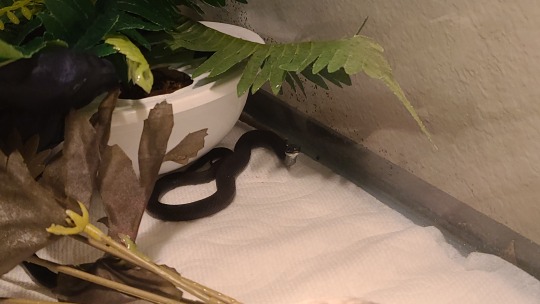


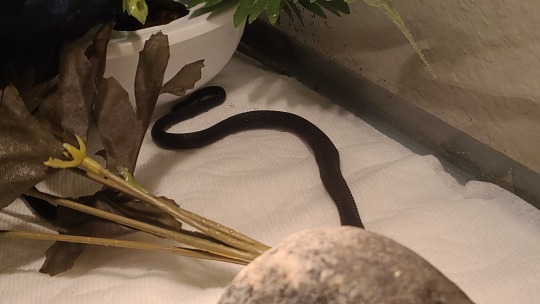
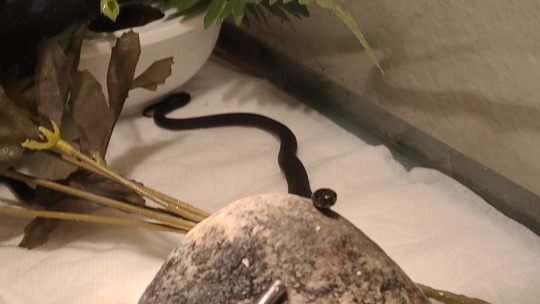
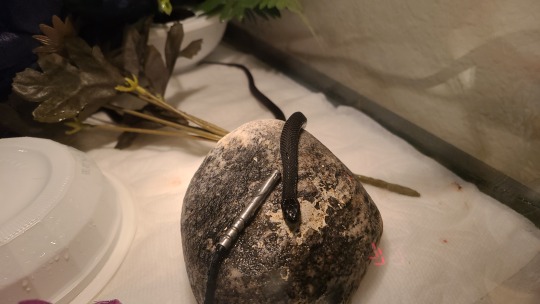
#rosy's reptiles#rosepetalexotics#rosepetal exotics#thamnophis#thamnophis sirtalis#thamnophis sirtalis sirtalis#gartersnake#garter snake#eastern gartersnake#eastern garter snake#the kids#herpblr#snakeblr#reptiblr#petblr#snake#snakes#pet snake#baby snake#melanism#black snake#reptiles#reptile#herpetology#herps#herp#exotic pets#pet#pets
111 notes
·
View notes
Note

Here's 2 of my kids! Right, hypermelanistic T.s.sirtalis, Left, Normal T.s.sirtalis.
Absolutely precious! Got to love a good garter!
#submission#eastern garter snake#snake#Thamnophis sirtalis#Thamnophis sirtalis sirtalis#reptile#melanistic#melanism#color mutation#in this house we love snakes#not allowed more due to the fact it’s gonna be over 1500 to house mine in PVC enclosures#and my boa will eventually outgrow that and need a bigger more expensive one#I’m going to have to donate a ton of plasma and start making/selling my wood carvings
25 notes
·
View notes
Photo

Eastern Gartersnake
Thamnophis sirtalis ssp. sirtalis
Colubridae
Photograph taken on October 2, 2021, at Marmora and Lake, Ontario, Canada.
#wildflowers of southern ontario#Eastern Gartersnake#Gartersnake#snake#Thamnophis sirtalis#Thamnophis sirtalis sirtalis#Colubridae#marmora and lake#ontario#canada#Thamnophis
14 notes
·
View notes
Text
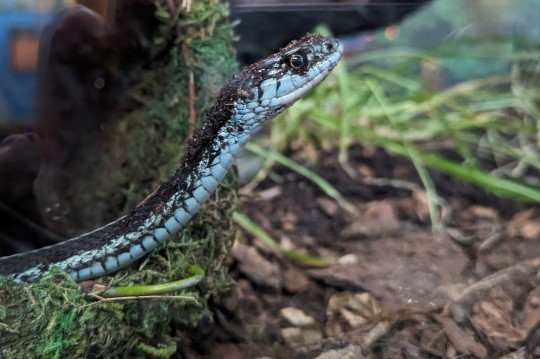
Went to a little zoo yesterday and was very excited to see they had one of my dream snakes. A blue Puget sound garter snake
110 notes
·
View notes
Text
Critter fact #123:
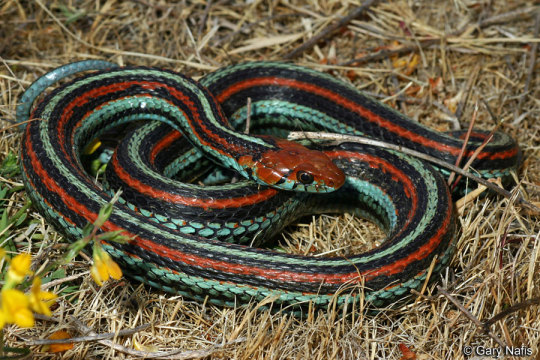
The San Francisco Garter Snake (Thamnophis sirtalis tetrataenia) is a beautiful subspecies os snake endemic to California. It is endangered
#Garter snake#Snakes#critter facts#Reptiles#San Francisco garter snake#Thamnophis sirtalis tetrataenia
22 notes
·
View notes
Text

Curio is getting BIG.
She is also currently in time-out to give the other garter babies a chance to eat because she has pounded down SEVEN PINKIES THIS WEEK
#she's a very aggressive eater#and tries to nip me/the tongs if i don't give her food#but she didn't bite or musk when i was holding her so i count that as a win#curio#common garter snake#garter snake#thamnophis sirtalis#snek#snakes#reptiles#reptiblr#pets#animals#meatspace#cute
56 notes
·
View notes
Text

Mountain Dew Code Red showing off how Long and Red she is today
#herp derp#reptiblr#snake#garter snake#California red sided garter snake#Thamnophis sirtalis infernalis#<that’s from memory so I may have spelled it wrong
9 notes
·
View notes
Text
Creature Awaits #213
Each week I plan to feature an amazing creature, admiring God's fantastic artistry. Hopefully it’ll brighten someone’s day to see something new and interesting if they haven’t seen it before. : )

(Stunning capture by skilled photographer, Natalie McNear (CC BY-NC-ND 2.0))
The California Red-sided Garter Snake
Scientific Name: Thamnophis sirtalis infernalis
Region: Coastal dunes, shallow waters and marshes across California in the United States
Size: About 22" (~55cm) long (average length)
Interesting Notes: This gorgeous snake, considered by many to be one of the most beautiful in North America, can easily be mistaken for the San Francisco Garter Snake. You can tell the difference if you remember that this snake is shorter, more slender, and has black and red blotches along its sides instead of the plain black and red stripes of their San Franciscan cousin. It is also interesting as it is a viviparous snake, meaning their embryos develop in eggs within the mother rather than them laying eggs externally.
#creatureawaits#hide#beautiful animals#beautiful snakes#american animals#colorful reptiles#California Red-sided Garter Snake#Thamnophis sirtalis infernalis
2 notes
·
View notes
Text

Venom Snake 🫡
#I don't take a lot of pictures of my snakes‚ they're not photogenic or they're embodiments of chaos 😭#reptile#snake#garter snake#Thamnophis#Thamnophis sirtalis#colubridae#colubrid#reptiblr#herpblr#snakeblr
6 notes
·
View notes
Video
Ready To Molt by kevin moore
Via Flickr:
When snakes shed their skin, a milky fluid accumulates beneath ocular scales, causing their eyes to appear blue and cloudy. The fluid acts as a protective layer, helping with the shedding process. After 3-5 days the blue phase ends, and the snake sheds its skin (1-2 weeks). This Common Garter Snake was in a field of Goldenrod, almost four feet off of the ground.
0 notes
Text

California Red-sided Garter Snake (Thamnophis sirtalis infernalis), family Colubridae, found in California, USA
Photograph by Tim Spuckler
2K notes
·
View notes
Text
I was misting the mantids tonight and Luna came to say hi

(image heavy)


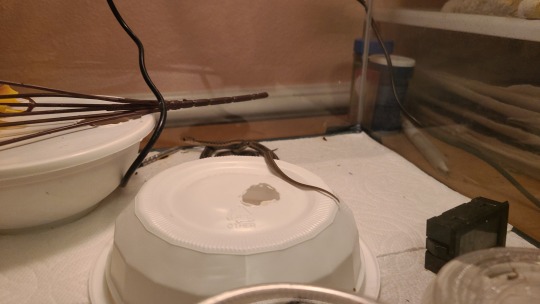


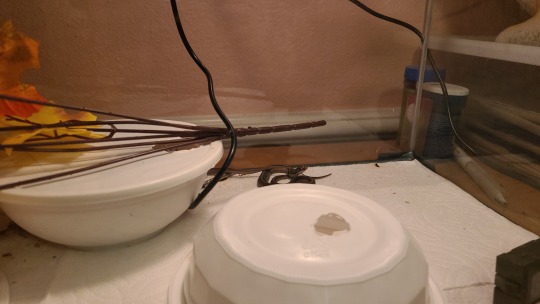
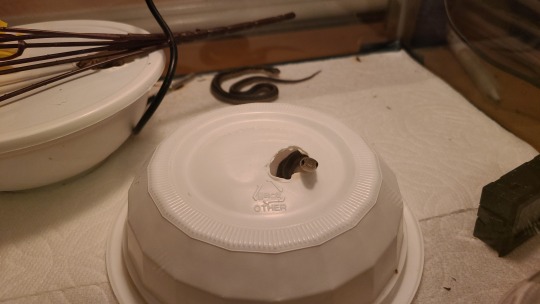
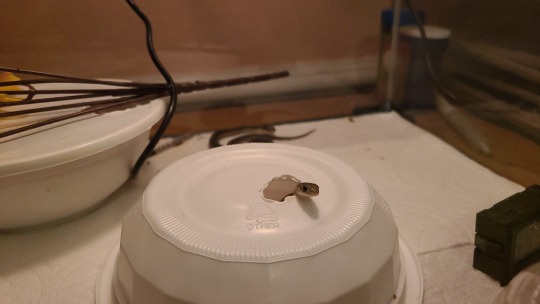




#rosy's reptiles#rosepetalexotics#rosepetal exotics#herpblr#snakeblr#reptiblr#petblr#herpetology#herp#herps#thamnophis sirtalis sirtalis#thamnophis sirtalis#thamnophis#eastern gartersnake#eastern garter snake#garter snake#gartersnake#snakes#snake#pet snake#snakes of tumblr#reptiles#reptile#pet#pets#animal#animals#cute pet#colubrid#the kids
10 notes
·
View notes
Note
🥚<3

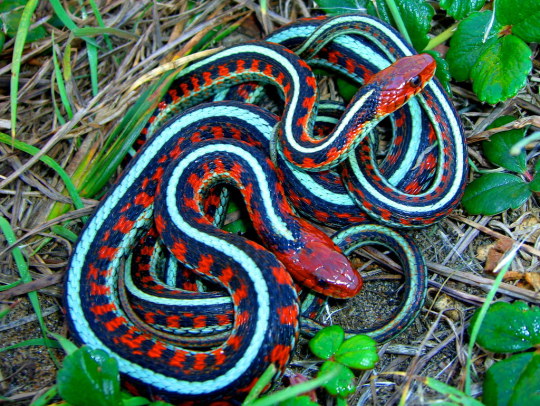
San Francisco garter snake!
(Thamnophis sirtalis tetrataenia)
554 notes
·
View notes
Text


Garter Snake
Thamnophis sirtalis
Colubridae
Photographs taken on July 28, 2023, at Marmora and Lake, Ontario, Canada.
#wildflowers of southern ontario#fauna#Garter Snake#snake#Thamnophis sirtalis#Thamnophis#Colubridae#marmora and lake#ontario#canada
6K notes
·
View notes
Text



I was so, so lucky to meet a very special trio of snakes for a class I'm taking on methods in field ecology. One of my two professors is a specialist in garter snakes and was kind enough to bring three different species in for us to compare in person and observe up close. The first was the gorgeous common garter snake, Thamnophis sirtalis, pictures above. She was so calm and well-mannered!
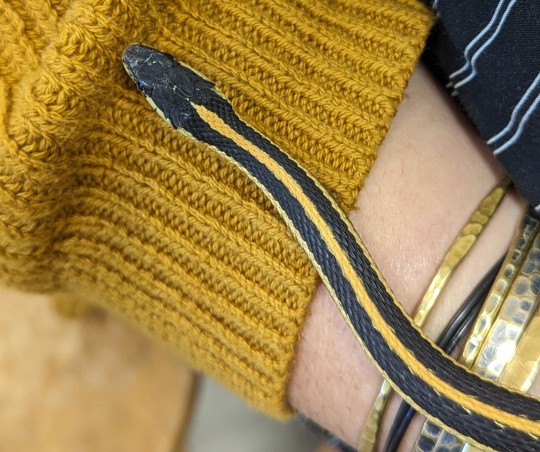


Next was this tiny (by comparison) T. elegans dude, a western garter snake, who was wary of the camera but very patient about being passed around by a group of excited college students. He matched my classmate's sweater perfectly!

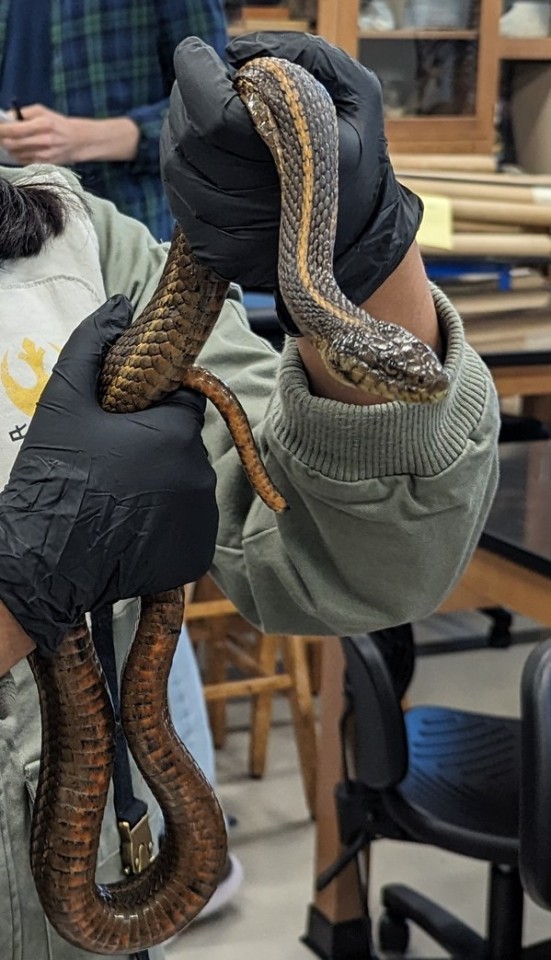

Finally, an endangered and incredibly precious T. gigas, the giant garter snake. She's about half of her maximum adult size, so a giant indeed! She musked and peed a bit but for the most part this gojira-faced beauty was pretty chill. We got to observe a full work-up for her including documenting records and microchipping.
She's one of the last of her species. Despite Herculean efforts by her protectors and conservation experts (mostly just one man and his dedicated team), this is a very difficult species to observe in the wild and their habitats are disappearing faster than their need for prioritization of protection in a given area can be assessed. These snakes rely on riparian habitat near rivers, which is also unfortunately a favorite for human development. At this time we don't know how exactly many giant garter snakes are left or whether their current populations are stable.
Today we got to visit their marshland habitat and watch these three go back to the place where they were caught. It was a huge honor and something I'll carry with me forever.
#snake#snakes#reptile#reptiles#reptiblr#garter snakes#garter snake#native species#we put that thing back where it came from or so help me#so help me!#science#ecology#endangered species#giant garter snake#western garter snake#common garter snake#when i got home i ate a salad so big that it made me sleepy
468 notes
·
View notes
Text

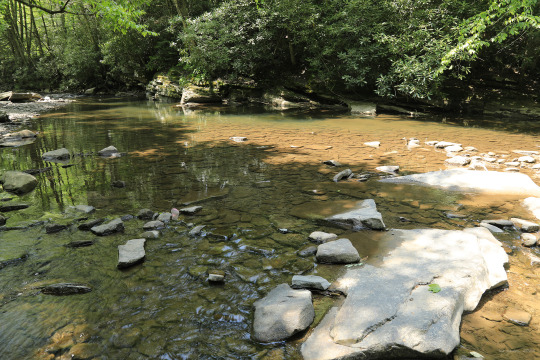
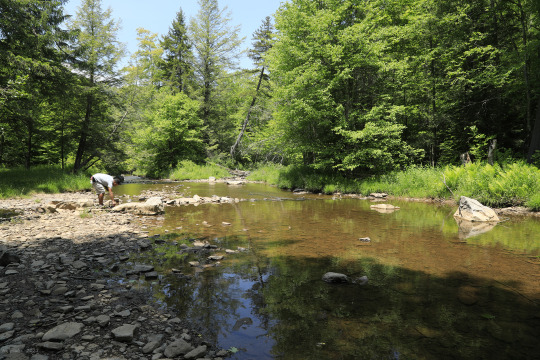
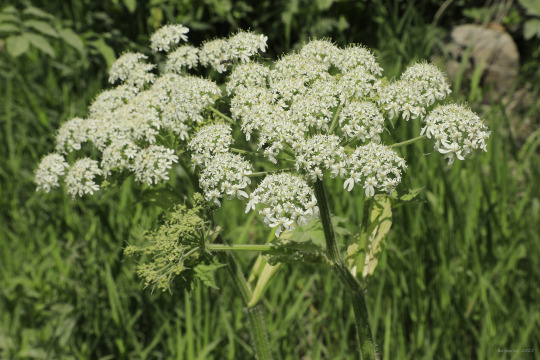




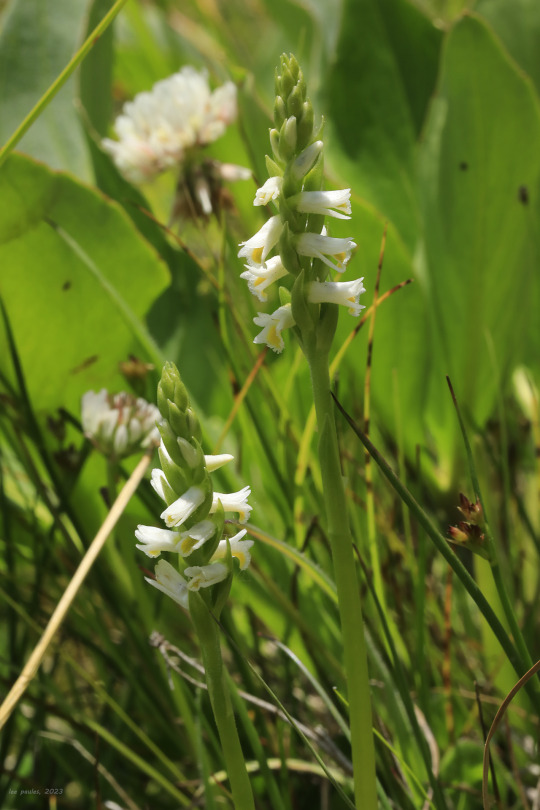
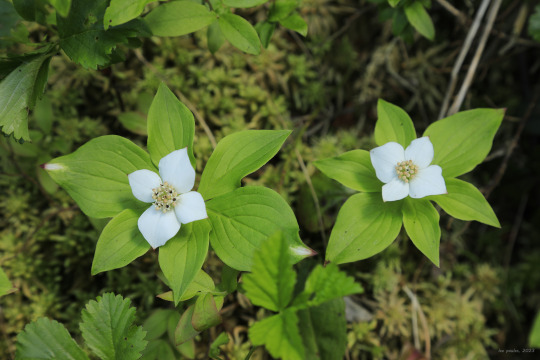

Day Date at Spruce Knob-Seneca Rocks National Recreation Area, Part 1. Most couples would probably equate a "date" to a nice dinner out and a Marvel adventure movie, but Blake and I, being hopeless nature fanatics and aspiring satyrs without hooves, equate it to mean "putzing around in the mountains". The timing was perfect: the haze from the Canadian wildfires, which has been choking most the US Mid-Atlantic and Northeast for the past week, had mostly moved on, replaced by a crisp blue sky with a light breeze.
From top: the view from the Rich Mountain Overlook on Old Route 33, heading toward Harman; Blake communing with the mystic creek chubs in Gandy Creek, one of the best brook trout streams in the Mid-Atlantic region; cow parsnip (Heracleum maximum), a mildly phototoxic beauty that Native Americans relied on for food and medicine; a forest composition of false green hellebore (Veratrum viride), ferns, wild geranium (Geranium maculatum), and golden Alexander (Zizia aurea); a close-up of golden Alexander, a lovely, spring-blooming member of the carrot family; the wetlands complex at Spruce Knob Lake; shining ladies' tresses (Spiranthes lucida), a spring to early summer-blooming bog orchid recognizable from its bright yellow labellum; bunchberry (Cornus canadensis), which can be easily mistaken for a spring-blooming forb but is actually a dwarf dogwood; and a feisty eastern garter snake (Thamnophis sirtalis sirtalis), whose saliva contains a mild neurotoxin that is deadly to its prey but harmless to humans.
#appalachia#vandalia#west virginia#wildflowers#spring#flora#allegheny mountains#monongahela national forest#spruce mountain#spruce knob lake#gandy creek#spruce knob-seneca rocks national recreation area#reptile#snake#eastern garter snake#cow parsnip#false green hellebore#wild geranium#golden alexanders#golden zizia#golden alexander#shining ladies' tresses#bunchberry#creeping dogwood#canadian dwarf cornel
133 notes
·
View notes
